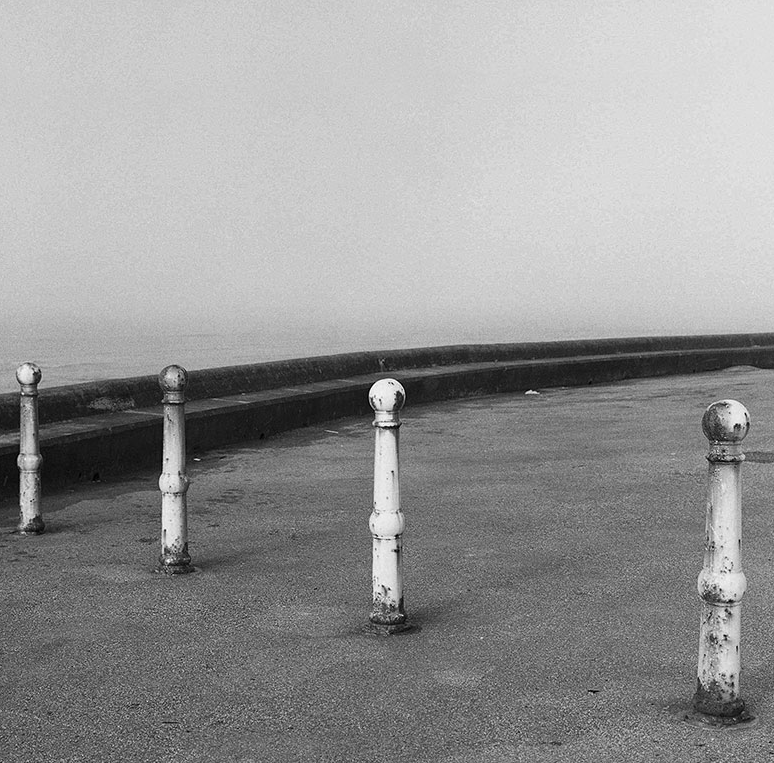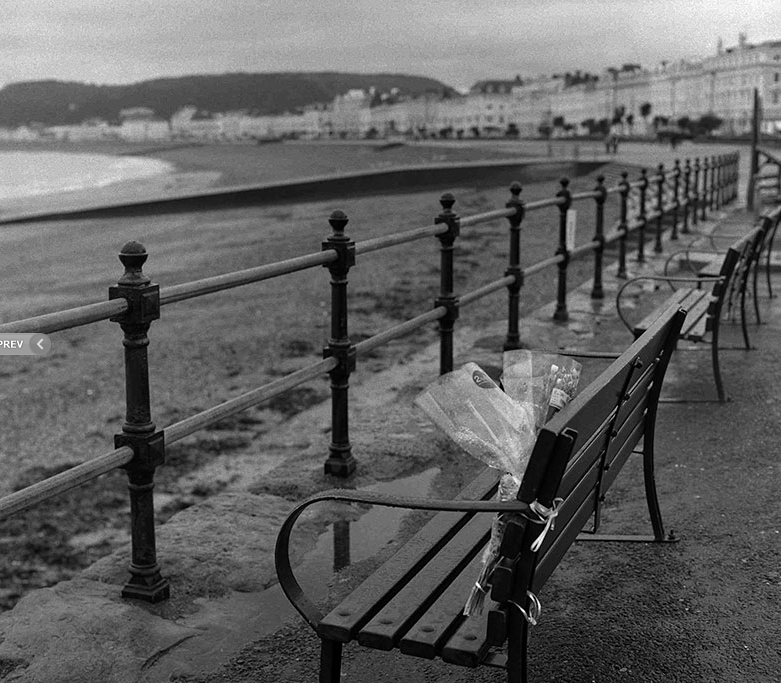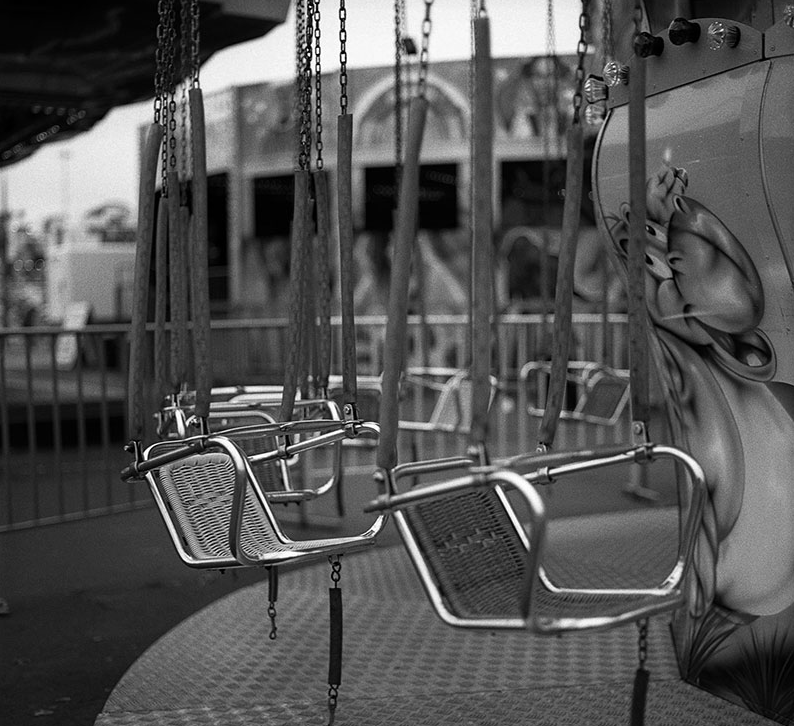One might ask why a public art would have a place for emptiness.
Photography certainly does. Whether looking across a Civil War battlefield, or at a road in the Crimea, or at the desolate streets and empty storefronts of urban decay, or at grasslands burnt down to dust by drought, scenes of desolation have played an important part in photography’s history.
One result is that it is easy to see another exhibition of empty places as verging on cliche; haven’t we been here before, and what is to be gained by looking again? When the loneliness is part of an amusement park or boardwalk or beach, one can feel manipulated: isn’t it just a cold day or off season? What’s to be learned when we know the people are just somewhere else and perhaps having a good time anyway? Is the point merely to contrast the artist’s work from the Happyville aesthetics of commercial media? That very likely is one motive behind a lot of documentary photography, but is that all we have here?
These questions were part of my initial reaction when looking at Andrew Fisher’s exhibition, Beside the Seaside, but something else keep me looking a bit longer. What I like about these images is that they don’t just show a degraded public space, even though the decay on the posts in the first photo hints at that. What I get instead is a complex sense of public space that says several things at once: that pubic life requires a built environment, however minimal that might be; that minimal is often good enough, because of how much will happen simply by people being present to enjoy a bit of leisure in a largely uncoordinated fashion; how it really is about the people and how they can share a common space, something we can forget when dazzled by newer construction or when isolated in our places of media consumption; and how association can lead to abandonment of the place and of each other as people follow their different interests to go elsewhere; and how even that sadness need be only for a while and can become a basis for reflection and repose.
So we need images of emptiness after all. Public culture is not just a story of bustle, excitement, conflict, change, and progress. It is all of this, but they all are prey to time, which is in fact something that Andrew is trying to tell us. We experience the amusement or the conflict or any specific event as if it will always reverberate across our lives, and some do. But there also is the down time, the emptiness, which was there before and will come again and is within us right now, always. Sometimes it helps to see that.



[…] En No Caption Needed nos muestra algunas fotografías de Andrew Fisher en las que se reflexiona sobre los espacios públicos, pensados para que hay gente, haciendo o disfrutando, pero que eventualmente quedan o permanecen vacíos. Este es un tema que a mí me había llamado la atención en al gún caso. […]